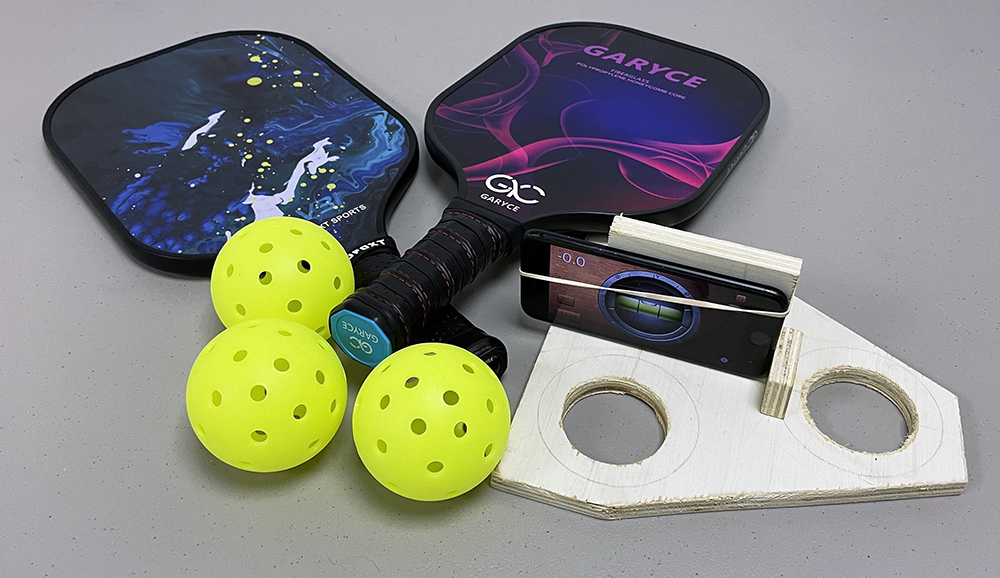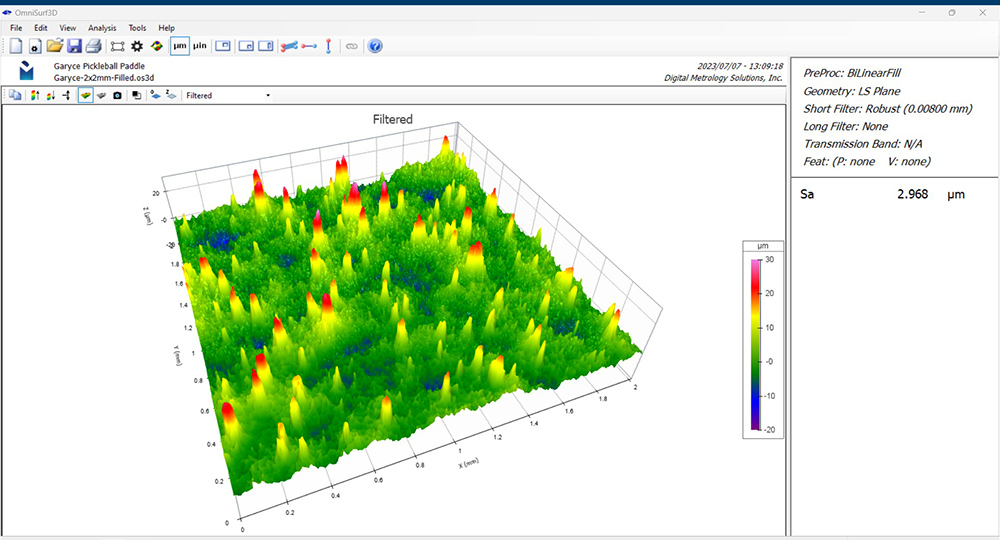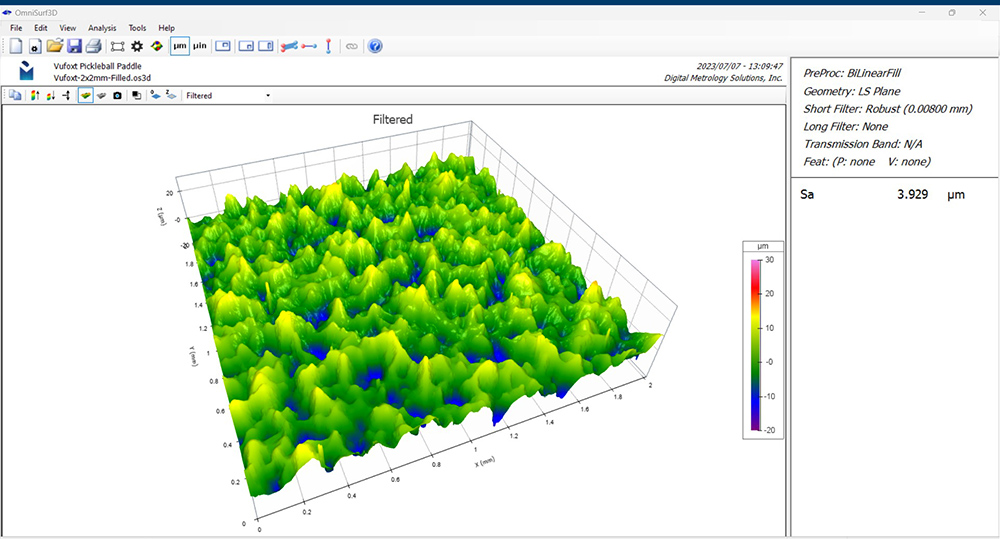It seems like the sport of Pickleball is everywhere these days! It’s definitely a game of skill…but having the right equipment doesn’t hurt, either.

We were curious how big a difference there might be between Pickleball paddles, so we put a couple under the microscope (this is the kind of thing we do for fun). We also posted the data so you can check it out for yourself, if you need a project for this weekend! The links are at the end of this article.
Pickleball paddles, and pickleball paddles
The image above shows the two paddles we tested, one from Vufoxt, one from Garyce. The Vufoxt paddle face is fiberglass, while the Garyce paddle features a “Carbon Abrasion Surface (Cas).” That picture also shows our quickly-created tilt testing setup, which we will talk more about below.
Comparing the surface texture
To the touch, the Garyce paddle feels much rougher than the Vufoxt paddle. We would expect this higher roughness might provide higher friction, which gives a player greater ability to impart spin to the ball.
So, does it just feel rougher, or is it really rougher? To find out, we measured both surfaces with our Zygo ZeGage profiler with a 10X objective. We then analyzed the surface textures with OmniSurf3D software. Here is the Garyce paddle surface in OmniSurf3D. Note that the texture has many widely spaced spikes, and an average roughness (Sa) of around 2.9 µm.

Now, here is the Vufoxt paddle. The texture appears “smoother,” without the spikes…yet the Sa value is 33% higher than the Garyce paddle!

Those widely spaced peaks in the Garyce paddle make the surface feel rougher, but the peaks don’t translate to a higher average roughness.
Does higher surface roughness translate to greater friction?
Now the question is, does the rougher surface give us more friction? To find that out, we built the highly engineered (!) tilt test setup shown in the videos below. In this test, we increased the tilt angle of the paddle until the balls began to slip down the paddle face. An iPhone provided the angle measurement. Here is a video of the Vufoxt paddle test.
The balls begin to slip at approximately 10.5 degrees. We know that the coefficient of static friction is equal to the tangent of the angle at which the objects slide, so this paddle has a coefficient of friction (µstatic) of about 0.18 with this Franklin X40 ball.
Now, here is the test setup again, with the Garyce paddle:
The balls stayed in place up to at least a 17.5 degree angle, at which point our test setup “reached its design limit” and fell apart. The coefficient of friction for the Garyce paddle was at least 0.3, though we suspect it would measure higher if we improved the fixture.

So, the paddle with the lower Sa actually had greater friction. The textures really matter!
The many peaks of the Garyce surface may be responsible for the higher friction, or it may be due to the peak spacing, or the pattern of peaks, possibly even a material interaction. We’d need to do more investigation to find out (add that to your project for this weekend!)
Regardless of the reason for the differences between the paddles, one thing is clear: friction does not necessarily track with average roughness. This is another case where average roughness, while the most popular parameter, may not be the most useful for tracking a function that’s important to us.
We invite you to try this all for yourself! The Vufoxt and Garyce paddle data are in our Surface Library:
digitalmetrology.com/dataset/pickleball-paddle/
digitalmetrology.com/dataset/pickleball-paddle-2/
You can explore these surfaces with OmniSurf3D (get a free demo version here) to see which texture parameters might relate to these friction values.
